Flushing devices for urinals: features, varieties, rules for selection and installation
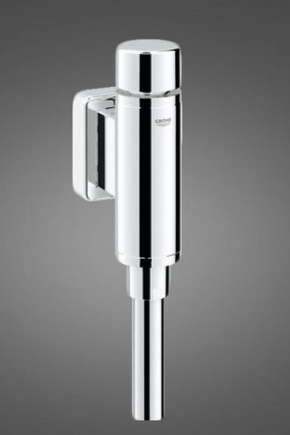
A urinal is a type of toilet designed for urinating. One of the main elements of this plumbing fixture is the flush device. Let us consider in more detail the features, varieties, rules for the selection and installation of flushing devices for urinals.
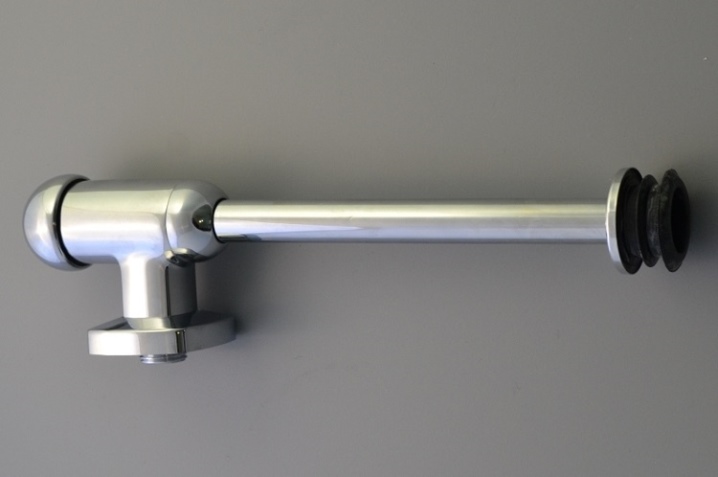
Peculiarities
The service life of urinal flush devices is determined by the following factors:
- brand awareness of the manufacturer;
- material from which the product is made;
- operating principle: push-on, semi-automatic, automatic;
- the type of material used for the outer cover of the drain mechanism.
The drainage system can be as follows:
- the tap, which must first be opened, and after sufficient washing of the bowl, close;
- a button, when pressed for a short time, the drain mechanism is started;
- a cover plate with a flush plate, which has a flat design for easy installation.
Important! The set of the panel for mechanical drain includes a special cartridge, which is designed in such a way that it allows you to adjust the volume of water supplied for flushing in a wide range.
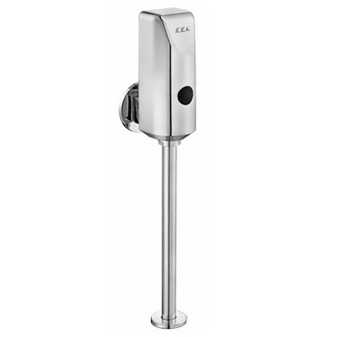
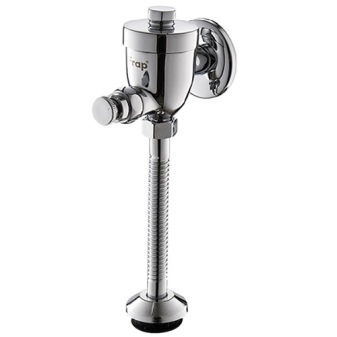
Views
Among the variety of flushing devices for urinals, there are two main types, such as:
- mechanical (based on manual flushing);
- automatic (electronic flush is used).
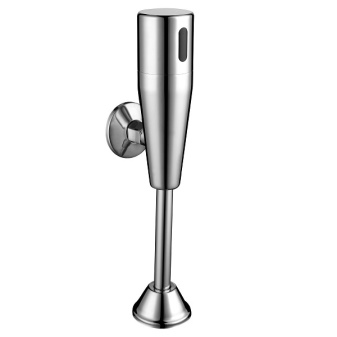
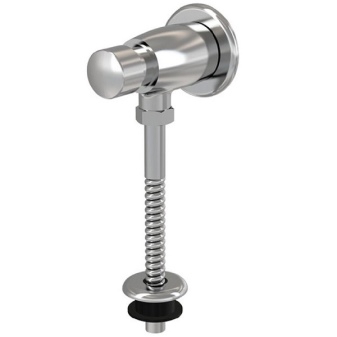
Manual devices are a traditional option, well known from the familiar toilet bowl. It is presented in several varieties.
- Pressure tap with external water supply. To activate it, you must press the spherical button. This will open the flush valve, which will then automatically close.
- Push-button valve with top water supply. To start the water, press the button all the way, and after flushing, release it. The valve will close automatically, excluding the further flow of water into the bowl, thus reducing its consumption. The water connection to the valve is carried out from above in front of the wall.

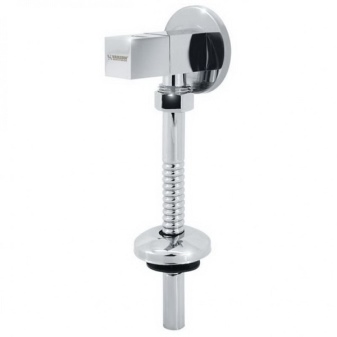
Automatic flush systems differ in a variety of types.
- Sensory - non-contact devices that completely exclude the contact of human hands with the surface of the urinal. The built-in sensor reacts to movements, including the water jet mechanism.
- Infrared equipped with a sensor that is automatically triggered by the beam, the source is the human body. To carry out auto wash, you need to bring your hand to a special device for reading information. Some flush systems of this type can be equipped with a remote control.
- With photocell. This type of auto flush system is gaining popularity. The system is equipped with a photocell and a current source. The principle of operation is based on the hit of light on the photodetector or, conversely, on the termination of its hit.
- Solenoid... The system is equipped with a sensor that reacts to changes in the PH level and activates the water supply.
Important! In addition, flushing devices can be both external (open) and hidden installation.

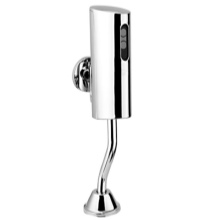
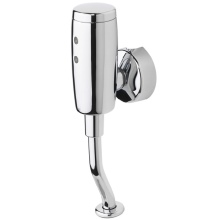
Brands
There are many manufacturers of urinal flush systems. But products of several brands are especially popular.
Jika (Czech Republic)
His collection Golem includes vandal-proof electronic flush systems.These are economical concealed devices that allow you to adjust the flush settings using a remote control.

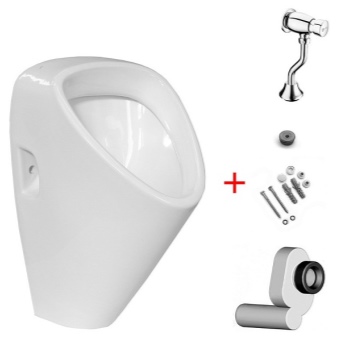
Oras (Finland)
All products of the company are of high quality and reliable installation.
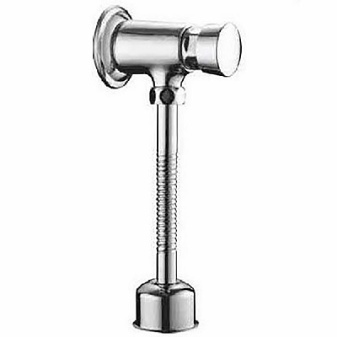
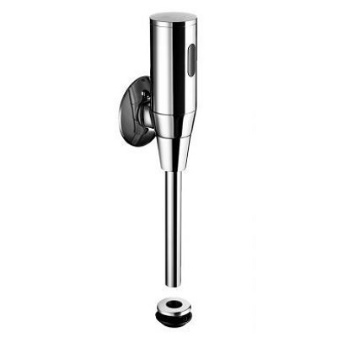
Ideal Standard (Belgium)
The company specializes in low-cost mechanical flushing devices. The flush end time can be adjusted to save water.
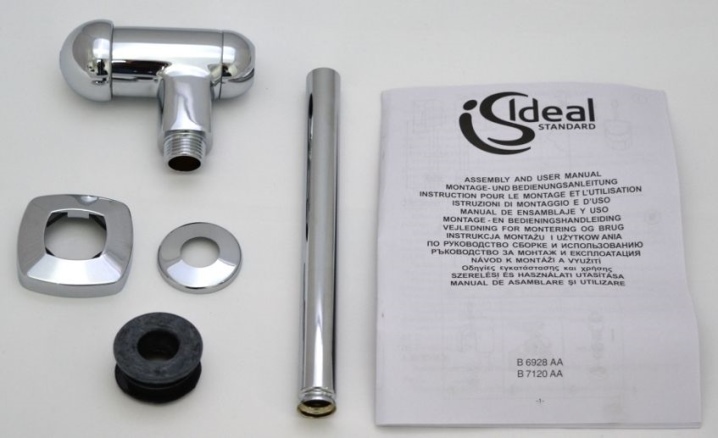
Grohe (Germany)
Collection Rondo represented by a wide range of devices for flushing in urinals, which are equipped with an external water supply. All products have a chrome-plated surface that can retain their original appearance during long-term use.
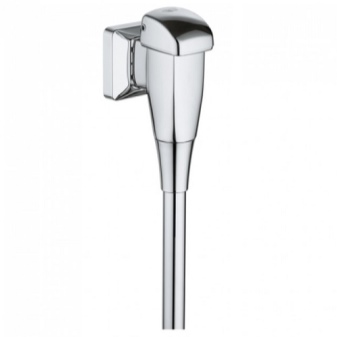
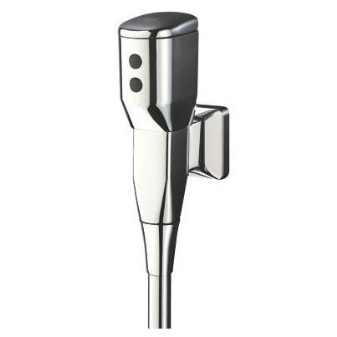
Geberit (Switzerland)
Its range includes the widest selection of flushing devices of various price categories.

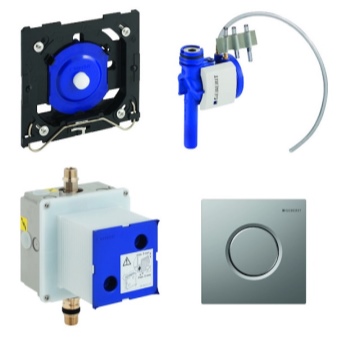
Selection Tips
Three flush systems are common in urinals.
- Continuous... This is a convenient but not economical way to flush. Its principle of operation is based on the fact that water is supplied continuously, regardless of whether the plumbing fixture is used for its intended purpose or not. If the bathroom is equipped with metering devices, then this system is not suitable.
- Mechanical provides for the presence of buttons, push taps and panels, which is very unhygienic, especially in public places. Contact with the button surface induces microbial transfer.
- Automatic - the most modern way to clean the bowl of plumbing fixtures. The most common are non-contact type devices based on sensors and infrared sensors. They allow economical use of water, exclude the transfer of bacteria, are reliable and durable. The kit usually comes with a washer, the flow of water in which can be controlled, adjusting it to your own needs.
The type of flush system is selected in accordance with the type and installation method of the urinal itself. In addition, the main purpose of the plumbing fixture should be taken into account: for personal use or a public toilet with high traffic.
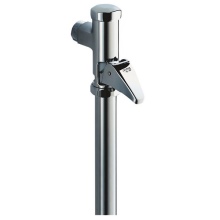
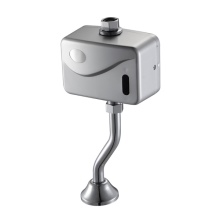

Installation recommendations
A faucet is responsible for flushing human waste from the bowl of the urinal, as well as the flow of water to it, which can function both in manual and automatic modes. Water can be supplied to the tap in two ways, such as:
- outside (external installation), when engineering communications are in sight; for their "disguise" use special decorative panels that allow you to give the room a harmonious look;
- inside walls (flush-mounted) - the pipes are hidden behind the facing material of the wall surface, and the crane is connected to them directly at the point where they exit from the wall; this method of connection is carried out in the process of carrying out repairs in the room.
After installing the tap and connecting it, you should set up the water drainage system, namely:
- the volume of a one-time supply;
- response time (in automatic and semi-automatic flush systems);
- the principle of operation of the sensors: to close the bathroom door, wave the hand, the sound of steps, and so on.
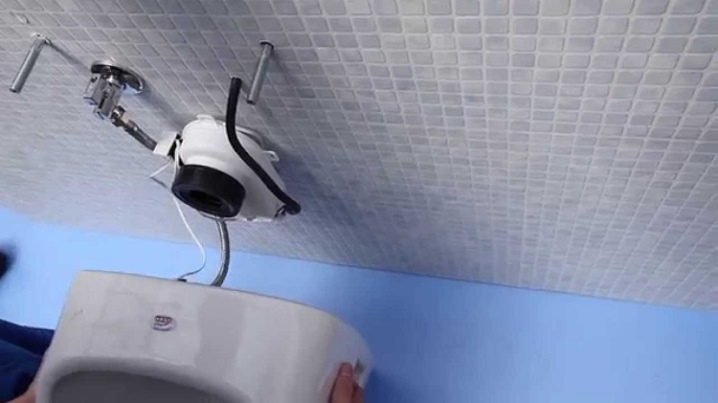
You can watch a video tutorial on installing a urinal and an automatic flush device below.













The comment was sent successfully.